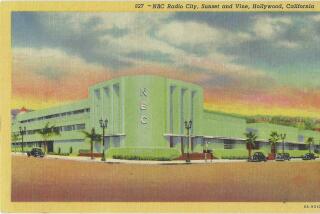It’s a Hull of a Note: Tuneful Toasters Terrorize Town
- Share via
In Hull, Mass., residents must be wondering: “What hath God wrought?” They are hearing voices--from their radiators, ovens, toasters and aluminum siding. Consider Anne Scully, 69, who is more than a little disturbed by Diana Ross’ singing of “Stop! In the Name of Love”--on her telephone. “It’s a pain in the neck to listen to voices that are not of your choosing,” Scully said. “I call it an invasion of privacy. I hear talk shows (from a bedroom radiator) all night long. I’d like to at least have some say in what I listen to. It’s obnoxious to have to lie in bed and listen to those stupid women who can’t sleep nights calling in to the talk shows.” The unwanted entertainment has always been blamed on two transmitting towers--built in 1940--for the 50,000-watt WBZ radio station in Boston. After one of the towers was damaged by fire in early November, the problem was intensified, since the remaining antenna had to send the signal in a wider sweep over Hull.
--Long before the wayward radio signals of Hull, Mass., Samuel F.B. Morse sent his famous telegraph message--”What hath God wrought”--although obviously not referring to a vengeful deity. That was May 24, 1844. It was a momentous occasion, almost as momentous as the first public demonstration of the telegraph Morse gave on Jan. 11, 1838, at Historic Speedwell, the 7.5-acre estate in Morristown, N.J., that is now a museum. About 30 ham radio operators dashed off to the museum last weekend to honor the man and that special date in the nation’s history. Today is the 150th anniversary of the day Morse sent this message: “Railroad cars just arrived, 345 passengers.” The assembled ham operators sent a message around the world in Morse code to commemorate the observance. Sarah Haskins, executive director of Historic Speedwell, said the gathering is one of many held this year to celebrate the telegraph.
--Charles Willie Pryor of Norfolk, Va., is feeling a lot better than the description of him last week on the obituary page of the Norfolk Virginian-Pilot and Ledger-Star. His relatives had identified him as the John Doe buried in the Hampton National Cemetery, but at the time, Pryor, 61, a World War II veteran and bricklayer, was a patient in the Veterans Administration Hospital in Hampton, and he knew nothing of the mix-up. Dennis Bryant, hospital spokesman, said: “The doctor that was treating him saw the obituary and said this name sounds too much like someone we are treating now. So they called the funeral home, and the family and a (half) brother came out to the hospital and said, ‘That’s my brother.’ ” Pryor now is resting in peace--in his hospital bed.
More to Read
Sign up for Essential California
The most important California stories and recommendations in your inbox every morning.
You may occasionally receive promotional content from the Los Angeles Times.










